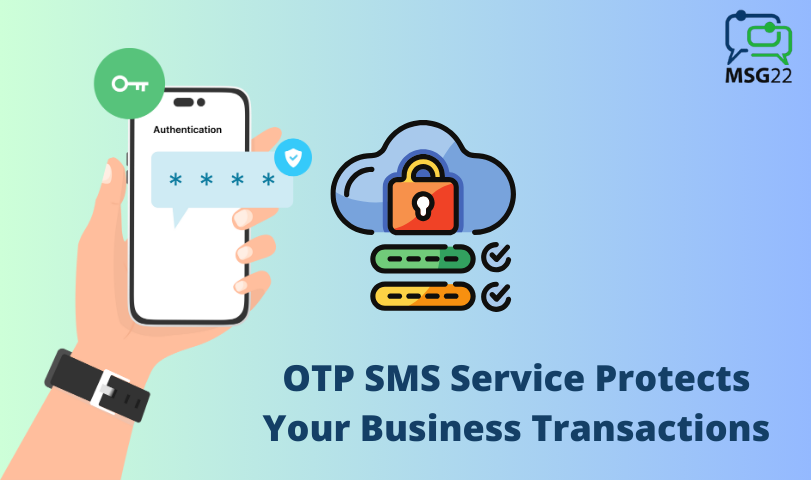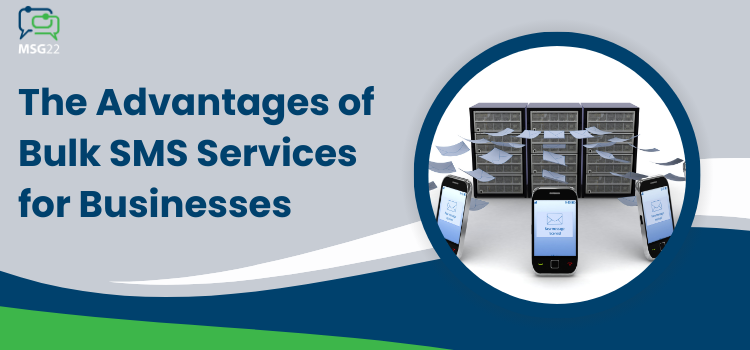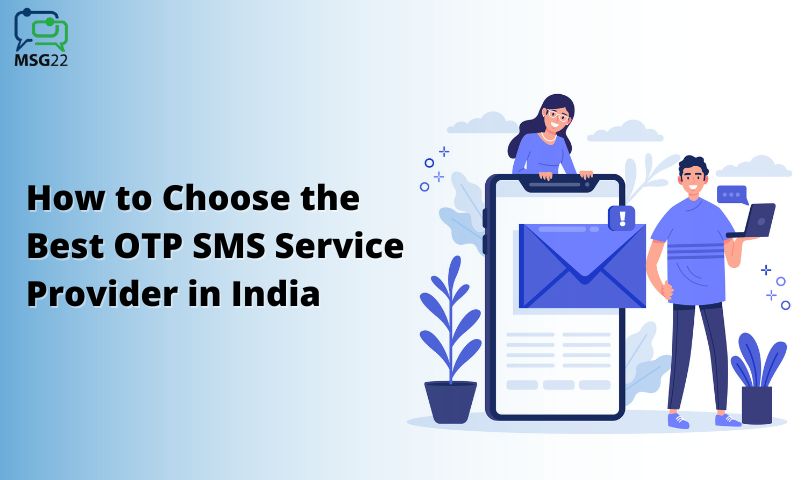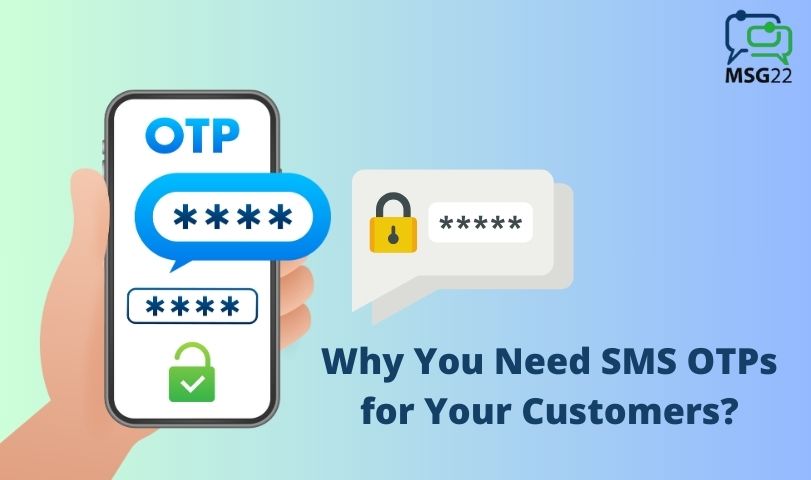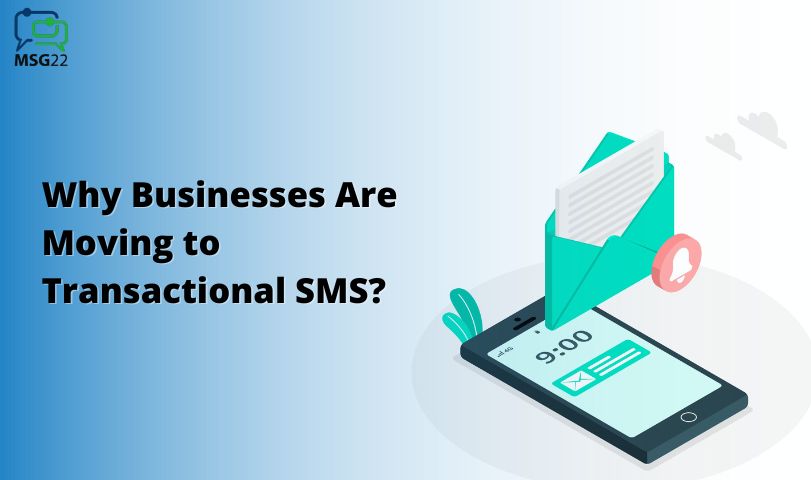OTP SMS Service, often known as one-time passwords, can fortify the security of your company transactions. Users receive one-of-a-kind codes called OTPs through voice calls, email, or SMS. The codes are produced at random.
Users have to enter the OTP in addition to their password in order to successfully complete a transaction. This increases the probability of unauthorized individuals accessing systems as well as accounts, even in cases where they have the right password.
Understanding OTP SMS
A one-time, unique code is used to authenticate a user through the use of a one-time password (OTP), a security mechanism. Online banking, two-factor authentication (2FA), and other sensitive transactions frequently use OTPs.
Usually, a hardware device or software program generates OTPs. The user then receives the OTP via email, text message, or another secure method. The OTP must then be entered by the user in order to finish the authentication process.
Because one-time use only OTPs are more secure than one-time-use passwords. They are harder to steal or repurpose because of this.
How Can OTP SMS Service Protect Your Business Transactions?

1. Keep Password-Based Attacks at Bay
Password-based attacks are one of the most popular ways that attackers access corporate networks and data. This includes dictionary attacks, in which hackers attempt to guess passwords using popular phrases and keywords, and brute-force assaults, in which hackers attempt to guess passwords by attempting millions of different combinations.
Because OTPs make password guessing as well as theft far more difficult, they can aid in the defense against password-based assaults. OTPs are considerably harder to crack or reuse due to the fact they are usually created randomly and have a limited validity duration.
2. A Short Period of Password Validity
Usually, OTPs are only good for a very brief amount of time 30 or 60 seconds, for example. This indicates that an attacker will be given just a short window of time to utilize an OTP before it expires, even if they are successful in obtaining one. As a result, attackers ought to find it far more difficult for them to finish a fake transaction.
3. Sending Important Information Securely
Furthermore, OTP SMS service could be utilized to safely transmit clients or staff members critical information. A bank might utilize an OTP, for example, to provide a code to a client so they could verify a significant transaction.
Employees can also receive one-time access credentials to private files or systems via OTPs. This makes it possible to guarantee that this information is only accessed by authorized personnel.
4. Check Commercial Transactions
Commercial transactions may additionally be verified with OTPs. An OTP SMS service could be used, for instance, by an outlet store in order to verify that the customer is authorized to use a credit card.
In furtherance of shielding companies from financial damages, this has the potential to lower fraud.
5. Add Two-Factor Authentication
2FA, a security feature that gives online accounts and systems an additional layer of authentication, frequently uses OTPs.
Users that utilize 2FA must input two distinct factors in order to log in. Usually, an OTP SMS service serves as the second factor and a password or PIN serves as the first.
It also raises the likelihood considerably for hackers to access systems or accounts, even in the event that they manage to get the user’s password.
6. Overcome PIN and Static Password Restrictions
The drawbacks of static passwords and PINs can also be solved with OTPs.
Static passwords and PINs can frequently be weak as well as easy to figure out. They are a popular target for cybercriminals since they can be utilized on several accounts.
On the other hand, OTPs are robust and distinct. They are not connected to any other accounts and can only be used once. They become a far more secure choice for authentication as a result.
7. Select From Various OTP Generation Methods
There are various OTP generation methods available. Some of them are:
- Time-based One-Time Password (TOTP): The most used technique for creating OTPs is TOTP. It creates a unique code using the current time and a secret key. This code is only good for a little while—usually 30 or 60 seconds. Mobile authentication tools like Authy or Google Authenticator are frequently used with TOTP.
- Hash-based One-Time Password (HOTP): This method generates an OTP using a counter rather than the current time, making it comparable to TOTP. Because of this, HOTP is more secure than TOTP, but it still necessitates synchronization between the client and server. In hardware authentication tokens, HOTP is frequently utilized.
- SMS-based OTPs: The easiest OTPs to produce are those that are SMS-based. They are merely an SMS that is delivered to the user’s phone at random. Although SMS-based OTPs are very easy to use, they are also the least secure because attackers are able to intercept them.
- Grid cards: A list of one-time passwords is printed on physical cards called “grid cards.” When prompted, the user just inputs the following OTP from the list. Grid cards may turn out difficult to use, misplaced, or stolen, but they are generally safe.
What Functions Does SMS OTP Verification Serve in the Bussiness?
1. Authorization
Access to sensitive information as well as carrying out sensitive tasks could be granted to users using SMS OTP verification. When a customer wants to transfer money from their account, for instance, a bank may employ SMS OTP verification to grant permission.
Alternatively, if a user has forgotten their password, a social media platform could enable them to access their account by using SMS OTP verification.
1. Added Users
SMS OTP verification is frequently used in order to verify a user’s identity as well as stop unwanted access when they are added to a system. Before enabling a new user to join the company’s intranet, for example, the business can provide an OTP to their phone.
2. Password-Free Login
Users could allow password-free login by using SMS OTP verification. Because users do not need to remember or manage their passwords, this can be more convenient and safe than using standard passwords.
The user is only required to enter their phone number to log in, and afterward, they will get an OTP on their phone. After that, they input the OTP to finish the login procedure.
3. New Passwords
SMS OTP verification may be considered utilized to help users create new passwords in the event that they forget the one they have currently. Typically, after entering their phone number, the user gets an OTP on their phone. After that, they create a new password as well as enter the OTP to confirm their true identity.
4. Opening a New Account
Upon opening a new account, such as a credit card account or bank account, users can utilize SMS OTP verification to authenticate themselves as well as thwart fraudulent activities.
Before enabling a new customer to open an account, a bank might, for example, send an OTP to their phone. This makes it more difficult for someone else to open an account using the customer’s identity.
5. Transaction Verification
Transactions, such as online purchases or money transfers, can be authenticated and verified through SMS OTP verification. By doing this, fraud is reduced as well and user accounts are safeguarded.
Before allowing a customer to make a significant online transaction, for example, a bank might send an OTP to their phone. This makes it a greater probability that the person making the transaction is the one who is approving it.
6. Order and Delivery Confirmation
OTP SMS service might be applied to delivery confirmation as well as orders as well. The OTP SMS service is also used by online merchants and e-commerce businesses for verification. The delivery person always requests an OTP from the customer upon receiving a package to ensure that the order is being picked up by the correct person.
Conclusion
Enhancing the user experience, decreasing fraud, and strengthening account and system security may all be achieved with ease by implementing SMS OTP verification. OTP SMS verification is beneficial for businesses of all sizes.
Users can be authorized, new users can be added, password-free login can be enabled, forgotten passwords can be reset, new accounts can be opened, transactions can be verified, and orders and delivery can be confirmed via SMS OTP verification.

